
The Best Grow Lights For Hot Peppers
Growing chillies is great fun. For those living in less-than-ideal climates, or who want to grow chillies all year round, this means moving plants inside during the colder months. In this case, you'll need some grow lights to help you along. Here, we explain everything you need to know about your chilli plant's photic needs.
Grow lights are often associated with cannabis, but when growing any fruiting plant indoors, artificial lights can make a huge difference. This is certainly the case with chillies. Though not essential, depending on the circumstances, many growers may want to boost their chilli crops or grow all year round by using grow lights. Here, we delve into what exactly pepper plants need in terms of light, and which lighting systems achieve the best results!
How much light does a chilli pepper plant need?
Chilli peppers, like most fruiting plants, need a fair amount of light. In the wild, they are most abundantly found in South America and parts of Asia where natural sunlight is strong. It’s generally accepted that chilli plants need at least five hours of direct sunlight each day, but they can take much more than this.
This is also true indoors. However, when growing chillies at home, you don’t need some elaborate cannabis-grow type of setup. Rather, a few strips of LEDs should suffice.
What light spectrum is best for hot peppers?
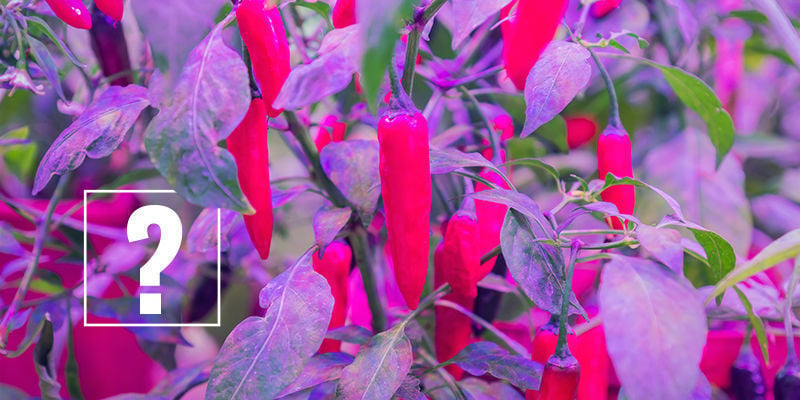
Chilli peppers require exposure to a full spectrum of light, ranging from blue, through white, to red, according to their stage of development.
Wavelengths within the blue light spectrum mimic bright spring sunlight. In nature, this is the time when seeds germinate and seedlings raise their heads above the ground and put out their roots. So plants have adapted to develop their roots best under blue light.
Then, when the plant is in the vegetative stage, as it’s growing upward and outward, strong white light, like that of midsummer, is best.
Finally, a red spectrum helps chilli plants develop the most abundant yields of fruit during the flowering stage. This is because plants tend to fruit at the end of summer and the beginning of autumn, when the sun is waning and the Earth’s atmosphere filters its rays in such a way that the red spectrum penetrates the most.
So, in short, chilli peppers require the whole visible light spectrum.
What light intensity for hot peppers?
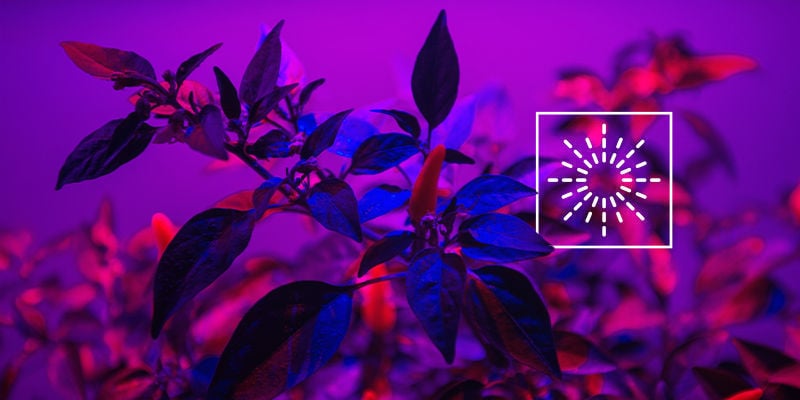
In a sense, more is better—to a degree. What you mainly need to avoid is heat produced by powerful lamps, as this can really hurt your specimens. That being said, peppers don’t require anything special. A good-quality grow light will likely be intense enough for your indoor plants if it's placed correctly.
When it comes to plants, the intensity of light is not measured in lumens, which describes how much visible light is emitted, but in photosynthetic photon flux density, or PPFD. PPFD measures the amount of photosynthetic active radiation (PAR) light that lands on the plant per second. Basically, plants require a certain amount of PAR, and PPFD tells you how much of that can actually be used by the plant.
Chilli peppers require at least 400μmol/m²/s PPFD. Fear not, you needn't really understand this; just be aware of these figures. High-quality grow lights will clearly state their PPFD rating—all you need to do is check that it’s sufficient.
What grow lights are best for hot pepper seedlings?
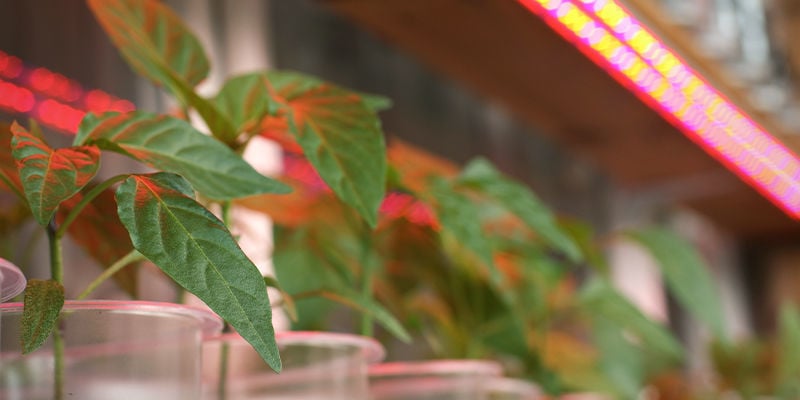
As mentioned, chilli pepper seedlings have different light spectrum requirements than in later stages. If you’re on a budget, it is possible to provide enough light for them using standard LED grow lights. However, specific T5 or CFL lights will give them the very best start in life.
T5 / CFL
These two types of grow lights are both fluorescent, giving off predominantly blue light. T5’s are just a certain size and shape designed specifically for growing. CFLs, on the other hand, are a bit more general. Ultimately, each fulfils the same purpose.
Both CFL and T5 grow lights run cool and require little in the way of energy, so you don’t need extensive setups to keep them cool, nor will they have a huge impact on your electricity bill. The other benefit of them running cool is that they can operate in the same conditions as LED lights, which you’ll likely want to switch to later in the plant’s life cycle.
Grow lights for hot pepper plants
When it comes to growing hot pepper plants indoors, you have a range of lighting options you can choose from. Your two main choices are LED and HID. Of course, you may opt to use fluorescent lights for the seedlings too, but at some point you’ll have to switch.
Below, we outline the pros and cons of these two lighting systems.
LED
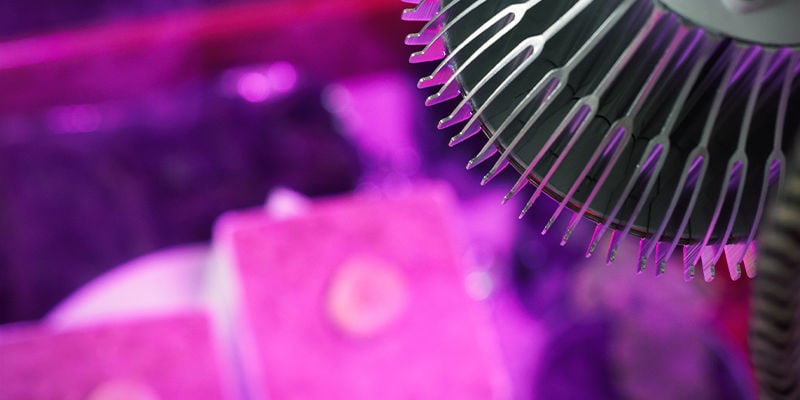
It wasn’t until recently that LED lights became viable as a choice for growing plants at home. When they were first introduced, LEDs were expensive and generally inaccessible. However, now the technology has reached a point at which LEDs are fast becoming the number one choice for growing all sorts of plants. Highly efficient and offering great flexibility, they are, in many cases, the best choice.
Pros of LED grow lights
- Run very cool and don’t require exhaust or cooling systems
- Relatively small
- A single panel of lights can change colour temperature, meaning it can be optimised for all stages of the grow (full-spectrum LED)
- Once up and running, LEDs require little in the way of energy and are cheap to run
- Each bulb can last thousands of hours
- They are light and easy to rig up
- Some options come attached to tripod stands, with strips of lights affixed to flexible limbs
- Wide range of options suitable to growers of all levels and settings
Cons of LED grow lights
- Good ones can be pretty expensive
- Cheaper ones may have limited spectrums and PPFD ratings, and therefore may not really work
- Do not give off much heat—this is generally a benefit, but some colder grow spaces might actually require the heat from HIDs
HID
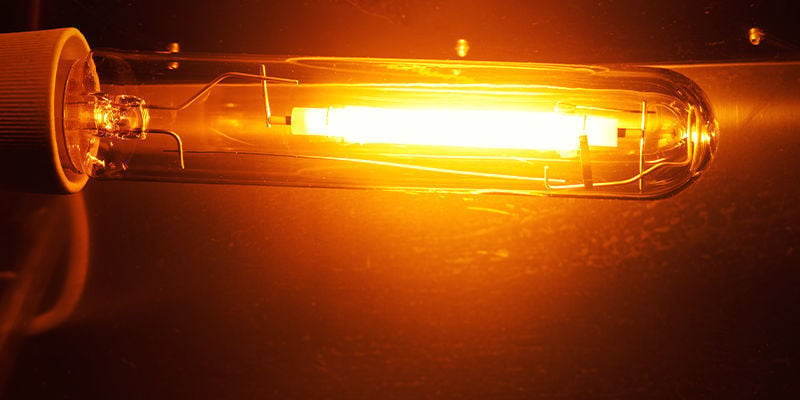
High-intensity discharge lights are very powerful. They come in two forms: metal halide (MH) and high-pressure sodium (HPS). The former is a bright white light that mimics the midday sun, and thus is perfect for vegetative plants. The latter has a red spectrum that is great for plants in the flowering stage. For best results, use the two together (at the appropriate stages).
Pros of HID grow lights
- Very powerful light spectrum and PPFD ratings
- Tried and tested for years; known to produce solid results
- Highly effective for vegetative stage and flowering stage
- Run hot, which can warm a cold space (this is mostly considered a drawback)
Cons of HID grow lights
- Can be expensive to set up
- Bulky and heavy, which means they require a certain degree of space
- Run very hot, and thus require an exhaust system to keep things cool
- Do not last as long as LEDs
- Use more energy than LEDs
Which is the best grow light for chillies?
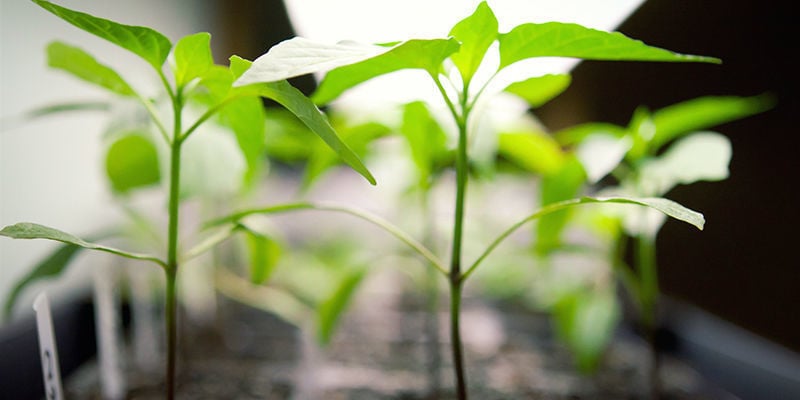
It’s hard to say. For those committed to growing the very best chillies, and aren’t bothered about other factors, HID grow lights are a secure choice. These have been the go-to for many, many years, and there’s a wealth of information out there about how to use them effectively. Moreover, thanks to their long history, finding good-quality devices is pretty easy. That being said, they involve a greater degree of effort to set up, and will probably incur more costs over time.
LEDs, on the other hand, are certainly less invasive, and require less care. For the small-scale hobbyist, they’re likely to cause a lot less hassle. Although, there is some debate over how effective they really are, and this can make finding good ones pretty difficult—as there is little consensus over what actually constitutes a good LED grow light. Nevertheless, a little research should help you.
Setting up your grow lights
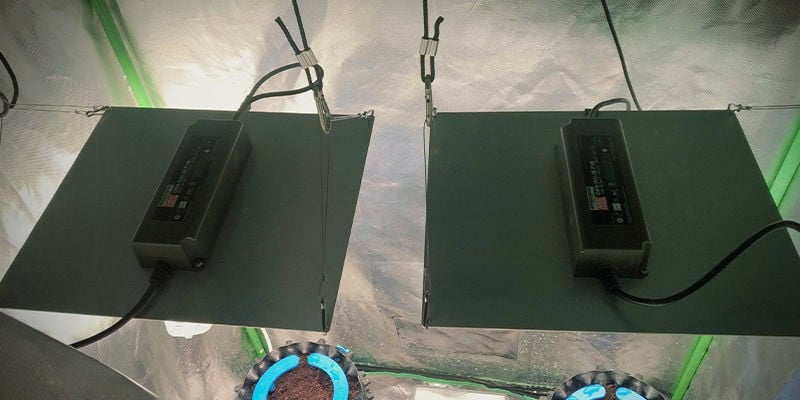
The type of grow light you opt for will change how you set them up, as will the environment in which you grow. Will you be growing in a tent? A small room? In general, the following pointers should help you set up your lights successfully:
-
Identify a space where you’ll have enough room to place your grow lights and your plants, and be able to adjust the height of the lights as the plants grow.
-
Then, rig up the lights, as well as any pulley systems necessary to move them higher or lower.
-
If using HID lights, ensure adequate ventilation, as overheating could be very dangerous.
-
Secure all wires properly, keeping them away from water and ensuring you won’t trip over them at a later date.
-
If automating the timing of your lighting system, set this up now.
Final tips for using grow lights
Your personal setup will determine exactly how you use your lights, but below we shed some advice common to growers of chilli plants:
-
Plants in the vegetative stage are likely to thrive the most when exposed to a 16/8 light cycle or even 18/6. While chilli plants are not beholden to the light cycle when it comes to initiating fruiting, exposing them to adequate light will help to maximise results.
-
Switch to a red light spectrum during the flowering phase to support fruiting.
-
Ensure you adjust the distance between the lights and the plants' canopy as your specimens grow; you want enough space to support optimal growth without burning or otherwise damaging your plants.
Should you use grow lights for chilli peppers?
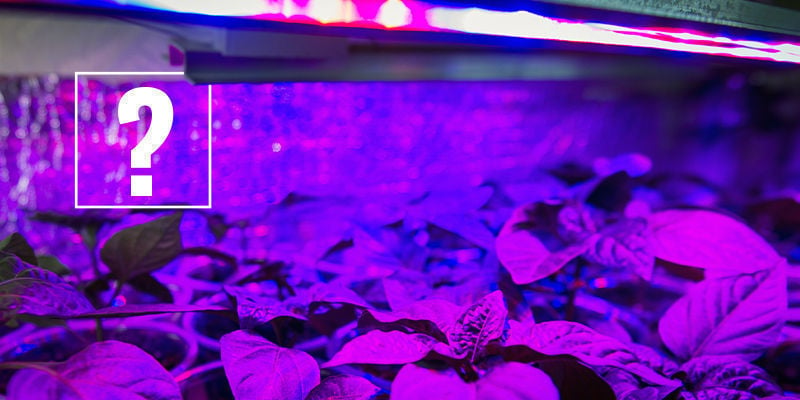
If you need or want to grow chillies indoors, then using grow lights is a great option. Depending on where you are and where your windows face, you might be able to get away with growing them on a south-facing windowsill and still get good results.
Nevertheless, grow lights allow you to achieve large harvests of chillies all year round. When starting out, there’s no need to overdo it in terms of expense. As long as you’re willing to spend enough to acquire some decent equipment, all should be well. After that, just treat your pepper plants with love!
-
 5 min
July 8, 2022
How To Prune Hot Pepper Plants For Maximum Yield
Getting the most out of our pepper plants is all we want as growers. Large yields of flavourful and spicy fruits are your reward for taking the time to provide your plant with regular maintenance....
5 min
July 8, 2022
How To Prune Hot Pepper Plants For Maximum Yield
Getting the most out of our pepper plants is all we want as growers. Large yields of flavourful and spicy fruits are your reward for taking the time to provide your plant with regular maintenance....
-
 6 min
April 12, 2022
How To Transplant Hot Pepper Plants
Growing chili plants is highly rewarding and, if done right, can produce bountiful harvests of tasty hot peppers. Transplanting is a crucial skill when it comes to chili cultivation, and we're here...
6 min
April 12, 2022
How To Transplant Hot Pepper Plants
Growing chili plants is highly rewarding and, if done right, can produce bountiful harvests of tasty hot peppers. Transplanting is a crucial skill when it comes to chili cultivation, and we're here...
-
 7 min
March 4, 2022
How To Grow Hot Peppers Indoors
Growing chillies might seem like a complicated task, but we're here to tell you that it really needn't be. Even if you don't have an adequate space outside to grow them, you can produce some...
7 min
March 4, 2022
How To Grow Hot Peppers Indoors
Growing chillies might seem like a complicated task, but we're here to tell you that it really needn't be. Even if you don't have an adequate space outside to grow them, you can produce some...
-
 9 min
October 5, 2021
Top 15 Hottest Peppers In The World (2025 Edition)
How does a chili become the hottest in the world? We take a look at the 15 most potent peppers you'll want to get your hands on—or perhaps avoid, depending on how well you can handle the heat! We...
9 min
October 5, 2021
Top 15 Hottest Peppers In The World (2025 Edition)
How does a chili become the hottest in the world? We take a look at the 15 most potent peppers you'll want to get your hands on—or perhaps avoid, depending on how well you can handle the heat! We...











 United States
United States








